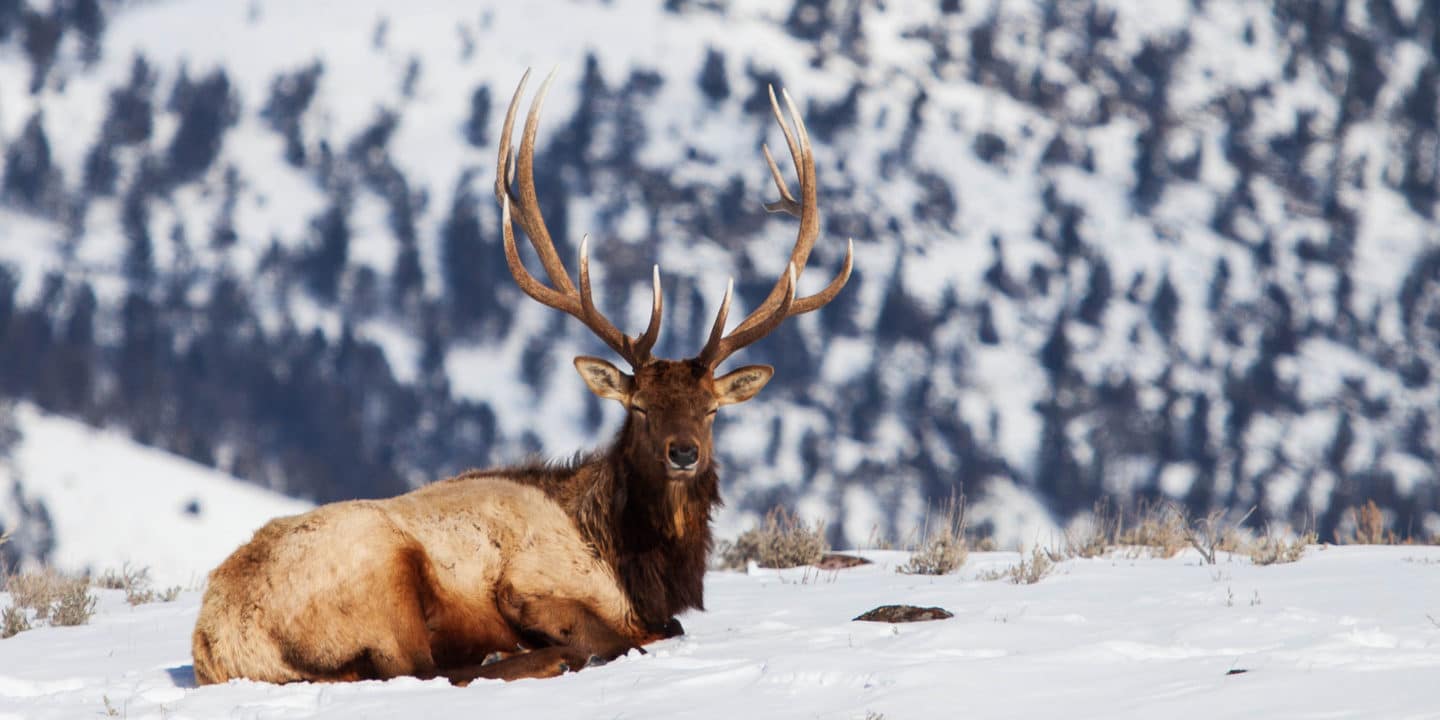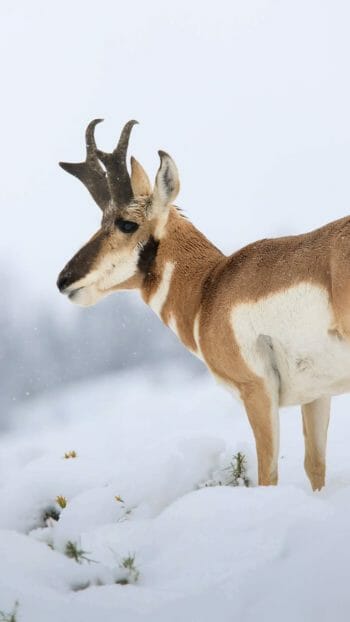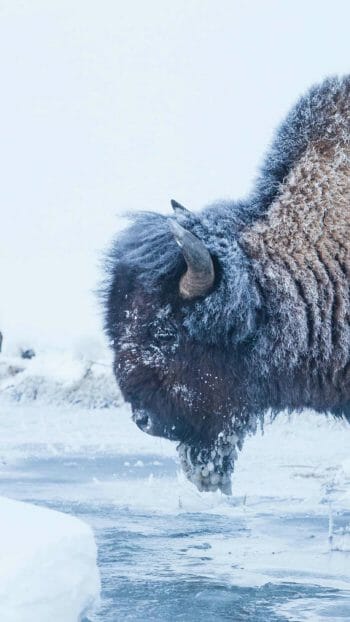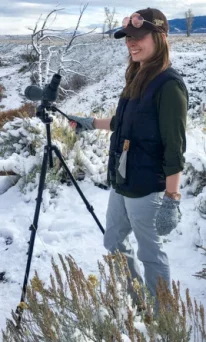Yellowstone National Park sees peak visitation in July and August, when daily visitation numbers can exceed 30,000 people. But a common question guides hear from summer visitors is: “Can you visit Yellowstone in winter?” Our answer is: Absolutely!

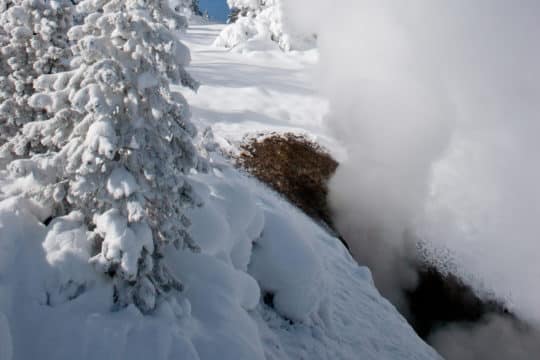
Yellowstone in Summer vs. Winter
The summer months in Yellowstone bring warm weather, clear roads, and ideal conditions for hiking, biking, and exploring scenic drives. But winter transforms the park into an entirely different world, one that feels both wild and magical. A thick white blanket of snow covers rolling hills, and frosted pine trees stretch for miles. Geysers and hot springs become even more dramatic in the cold, as plumes of steam rise against the frozen air. Experiencing Yellowstone in winter is like stepping into another universe, and it’s an adventure every nature lover should experience at least once.
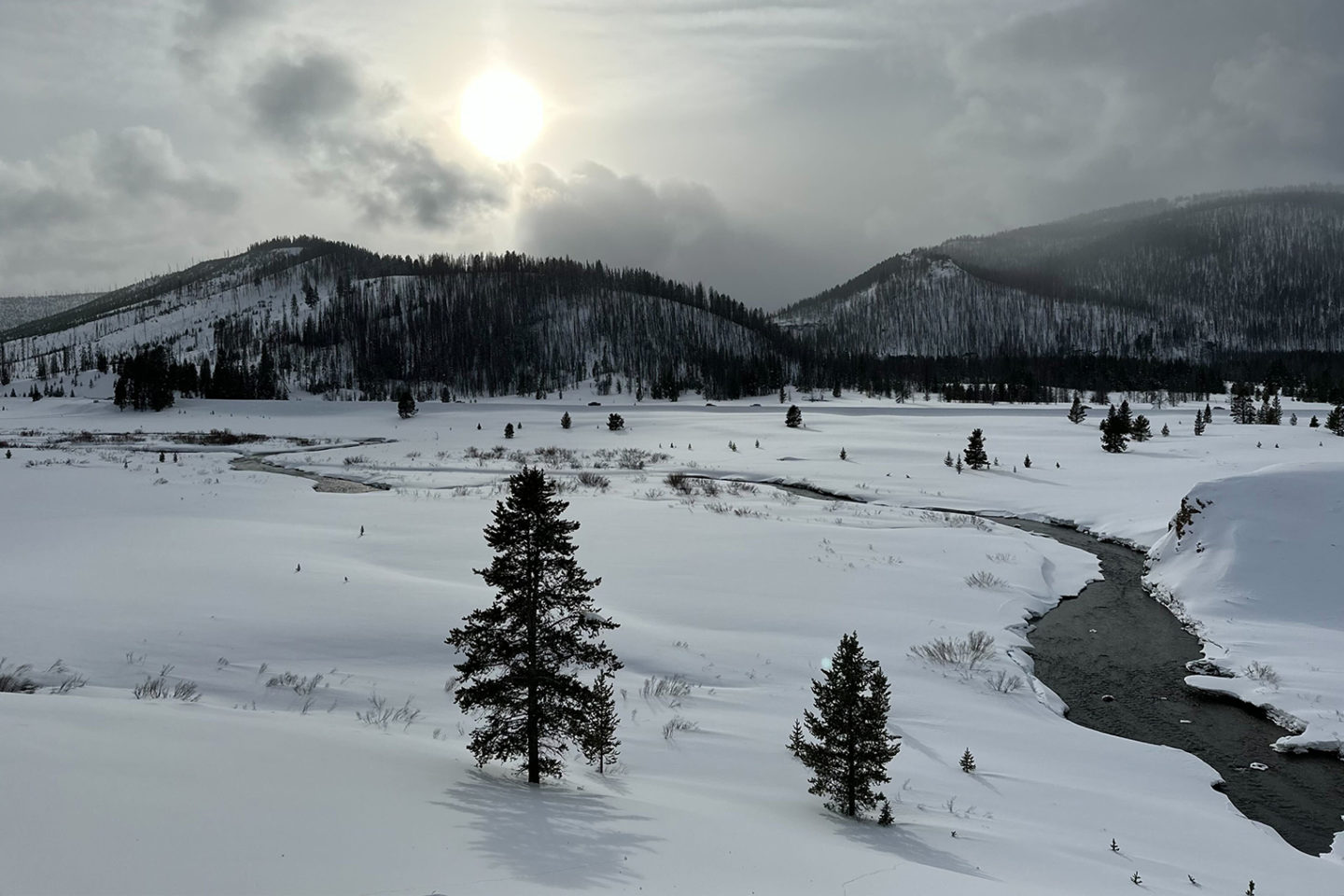
Winter Weather in Yellowstone National Park
Yellowstone winters are famously harsh. Daily temperatures often range between 0°F and 20°F, with cold snaps plunging well below zero. Snowfall averages 150 inches annually, with higher elevations sometimes receiving twice that amount. These extreme conditions force most park roads to close from November through April, limiting personal vehicle access.
The North Entrance at Gardiner, Montana remains open year-round, and the Northeast Entrance provides access to the charming towns of Silvergate and Cooke City. These small mountain communities offer unique lodging options for winter visitors who want a quieter, more intimate experience of Yellowstone.
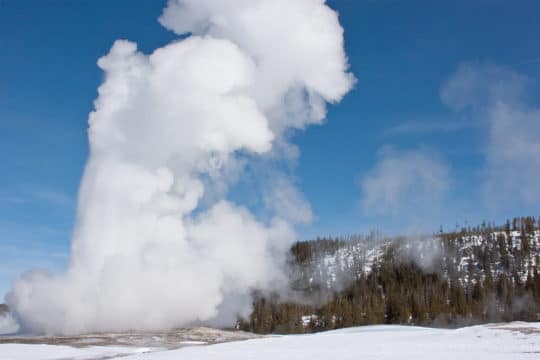
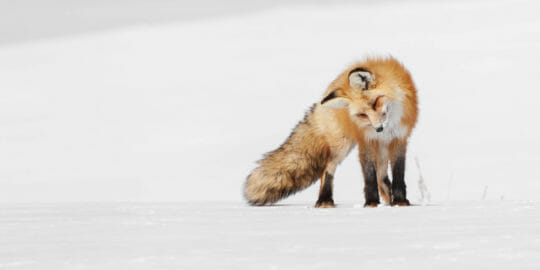
Why Take a Yellowstone Winter Wildlife Safari?
Driving Yellowstone’s snow-packed, winding roads in winter can be intimidating for those unfamiliar with such conditions. That’s why a Yellowstone winter wildlife safari is the safest and most rewarding way to explore. Guided tours use well-equipped vehicles designed for snow travel, and naturalist guides know exactly where to go to find animals.
At over 2.2 million acres, Yellowstone is vast, and spotting wildlife in the snow can feel overwhelming. Guides understand seasonal movements and know the prime areas to scan, dramatically increasing your chances of seeing wildlife in action.
Depending on your interests, you’ll want to take different routes. For example, if you’re interested in seeing the major highlights like Old Faithful Geyser, hot springs, and the Grand Canyon of Yellowstone, you’ll want to choose the Best of Yellowstone Tour which guides you to those locations. On the other hand, if wildlife is more of a priority, our Yellowstone Wildlife Safari will take you to locations where the most recent wildlife activity has been spotted. If you want it all, a 2-day or 3-day safari would be an excellent choice!
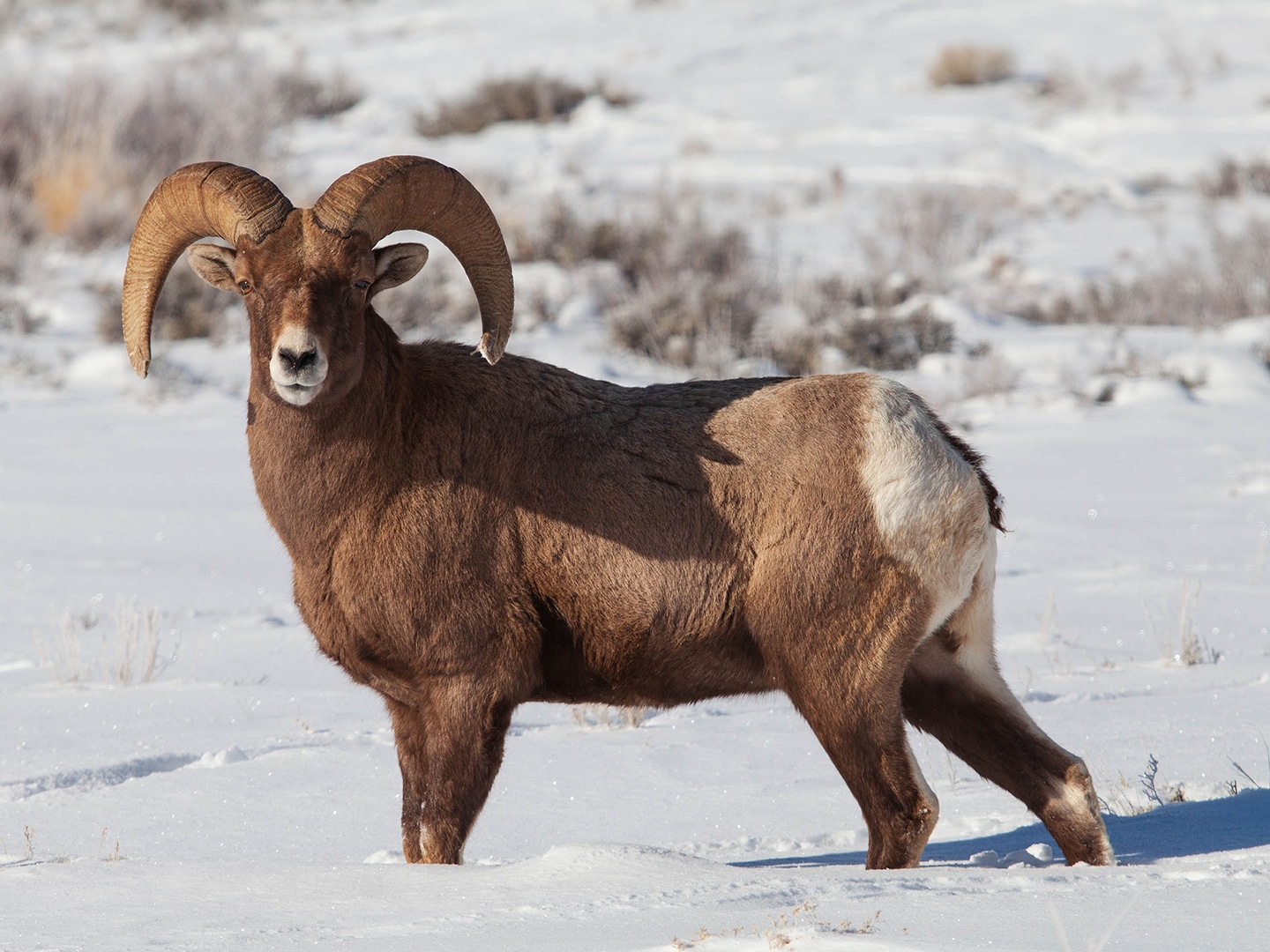
Wildlife You Can See in Yellowstone During Winter
Winter is one of the best seasons for wildlife watching in Yellowstone.
- Bison are icons of winter resilience. Their thick fur and even thicker skin allow them to endure subzero temperatures. Often you’ll see them covered in snow, perfectly insulated against the cold.
- Elk migrate to lower elevations, but some herds remain in the northern range.
- Moose thrive in the cold, browsing on willows and often seen in river valleys.
- Wolves are the stars of the season. Adapted for snowy travel with thick fur and broad paws, they gain the advantage over prey like elk in winter when food is scarcer and animals are weaker. Wolves are also easier to spot against the white landscape, making Yellowstone one of the best places in the world to see them.
- Other wildlife includes mountain goats, bighorn sheep, coyotes, foxes, eagles, and smaller mammals like ermine. Winter may seem quiet, but Yellowstone’s wildlife is always on the move.
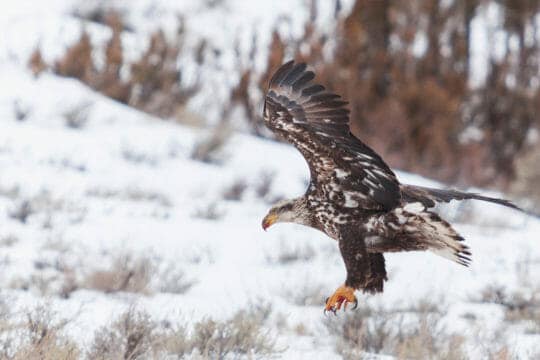
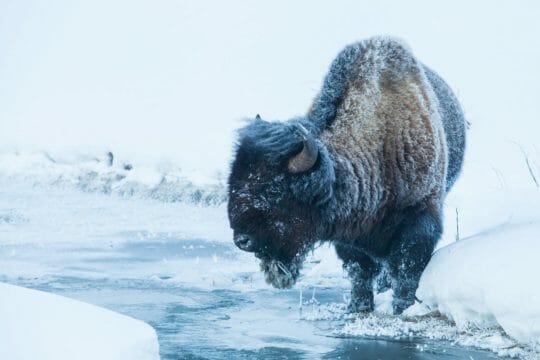
The Importance of Optics for Wildlife Viewing
Yellowstone’s vast valleys, cliffs, and forests mean that wildlife is often seen from a distance. High-quality optics are essential for both locating and appreciating animals. During guided tours, every guest receives their own binoculars, while guides set up powerful spotting scopes for closer views.
From an owl perched high in a tree to a wolf feeding at a distant treeline, these tools make all the difference. Many guides even take photos through the scope for guests, giving them a keepsake of a rare wildlife sighting.
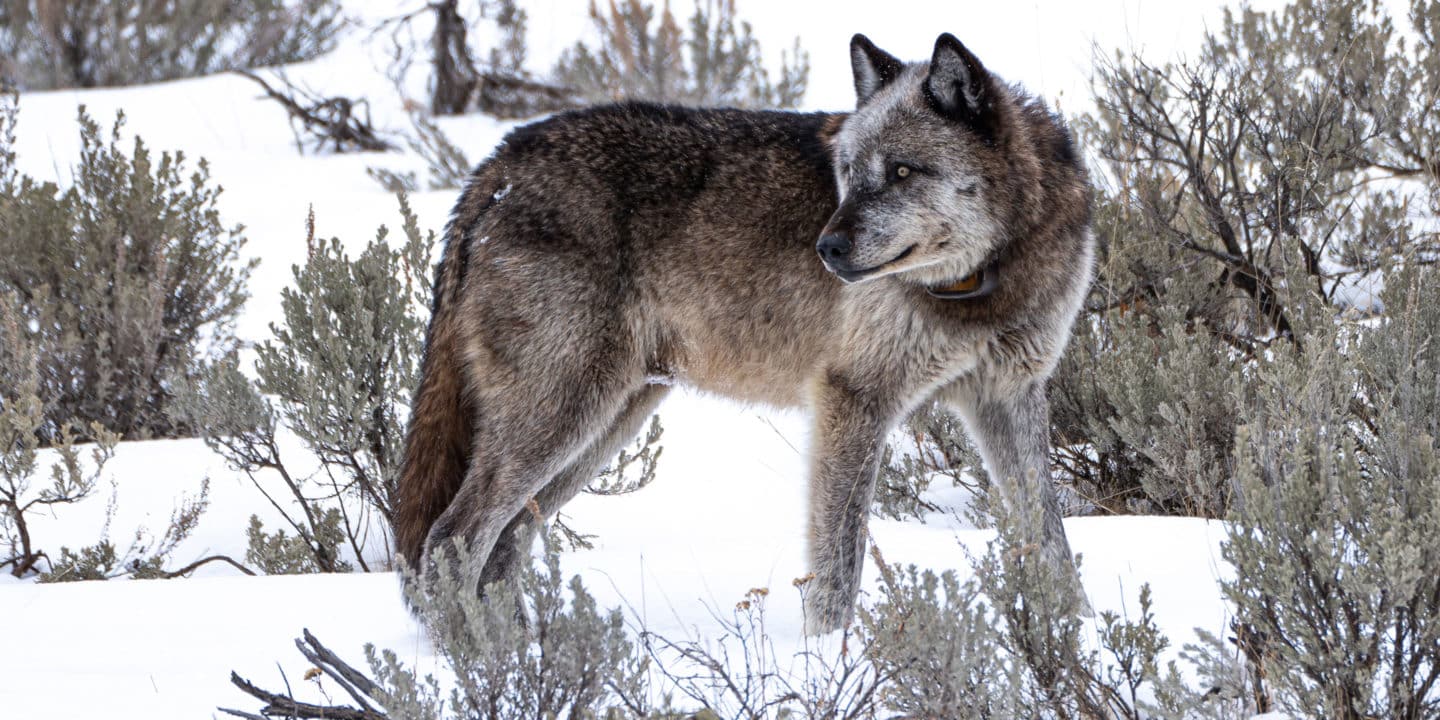
Passionate Guides, Unforgettable Experiences
At the heart of a Yellowstone winter safari are the guides themselves. Every naturalist is passionate about this ecosystem and loves sharing it with others. They know the stories behind each species and landscape, making every encounter meaningful.
There is nothing quite like the look on a guest’s face when they see their first wolf, moose, or bison in the wild. With the knowledge and expertise of your guide, winter in Yellowstone becomes not just a visit, but a memory that will last forever.
FAQs
Can you visit Yellowstone National Park in winter?
Yes. While most park roads close from November to April, Yellowstone is open year-round. The North Entrance at Gardiner, Montana, remains accessible, and guided Yellowstone winter tours provide safe, comfortable access to wildlife and scenic highlights during the snowy season.
What animals can you see in Yellowstone during winter?
Winter is one of the best times for wildlife viewing in Yellowstone. Visitors often see bison, elk, moose, wolves, bighorn sheep, coyotes, foxes, and bald eagles. Wolves are especially visible in winter as their dark coats contrast with the snow.
How cold does Yellowstone get in the winter?
Yellowstone winters are harsh, with average temperatures between 0°F and 20°F, and cold snaps that can plunge well below zero. Snowfall averages 150 inches annually, with higher elevations sometimes receiving double that amount.
Is it safe to drive in Yellowstone during winter?
Most interior park roads are closed to personal vehicles in winter, and snow-packed conditions make driving difficult. The safest way to explore is on a Yellowstone winter wildlife safari, where professional guides handle navigation with vehicles equipped for snow and ice.
Why should I take a guided Yellowstone winter tour?
A guided winter tour offers the best chance to see wildlife, as naturalist guides know where animals are most active and provide spotting scopes and binoculars for close-up viewing. Guided tours also eliminate the stress of winter driving and enrich the experience with expert storytelling about Yellowstone’s ecology and history.

